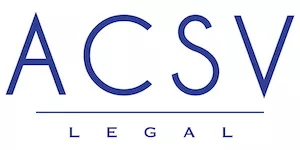The current Law on Anti-Money Laundering (AML) of Vietnam (Current Law) was issued in June 2012. Therefore it is not in line with how business activities have developed over the years and in particular the Financial Action Task Force (FATF) 40 Recommendations. Accordingly, it is necessary to update the Current Law to align with international norms and to timely govern new business circumstances.
The Vietnamese National Assembly adopted a new Law on AML (New Law) on 15 November 2022. This New Law will take effect on 1 March 2023. Amongst others, the New Law aims to cover sensitive areas such as e-wallet services.
In this update, we will present several remarkable changes in comparison with the Current Law.
1. Definition of Money Laundering
Under the Current Law, the definition of money laundering is limited to three specific acts. The New Law removes this limit and has re-designed the definition into a catch-all clause. Any act can be considered money laundering if the purpose is to legalise the origin of the property resulting from a crime.
2. Reporting Entities
In line with the FATF Recommendations, under both the Current Law and the New Law, the reporting entities which are required to perform customer due diligence and record-keeping for the purpose of money laundering prevention, consist of financial institutions (FIs) and designated non-financial businesses and professions (DNFBPs). The New Law has added new entities and now payment intermediary service providers, and providers of services of securities brokerage and securities investment consulting are included as FIs. This will address the emergence of digital financial intermediaries and the rapid development of the stock market in Vietnam.
It is worth noting that peer-to-peer (P2P) lending platform providers and virtual asset service providers, which had become popular, used to be listed as one of the FIs subject to the AML requirements in a previous draft of the New Law. However, these entities were eventually removed from the New Law because the legislators found the aforesaid subjects are new in Vietnam and are not regulated. Instead, the New Law empowers the Government to supplement new reporting entities if it foresees any money laundering risks from such subjects. Approval by the Standing Committee of the National Assembly is required.
3. New Obligations at Grass-Root Leve
3.1 Money Laundering Risk Assessment
The New Law for the first time introduces a new obligation of money laundering risk assessment at grass-root level of each reporting entity (i.e. FIs or DNFBPs). The assessment results must be updated annually. If the reporting entity is an organisation, the assessment results and related updates must go through an internal approval process. A reporting entity is required to report the money laundering risk assessment results and any updates thereon to the State Bank of Vietnam (SBV) and its reporting line authority within 45 days from the issuing date of the reports or the updates. The reports or updates shall be circulated internally as well. Further details regarding implementing such money laundering risk assessment will be given by the SBV. Of note, in accordance with the New Law national assessments of money laundering risks will be implemented in Vietnam every five years. It is recommended that the reporting entities follow the result of national assessments of money laundering risks as this should be an important reference source to carry out money laundering risk assessment at grass-root level.
3.2 Customer Risk Classification
Under the Current Law, the reporting entities are required to build an internal process of classifying their customers according to the levels of risk of money laundering. The New Law sets out an obligation for a reporting entity to build an internal money laundering risk management process based on its money laundering risk assessment results as mentioned in Section 3.1 above. The money laundering risk management process includes not only customer classification according to the levels of risk of money laundering, but also AML measures applied to each level of risk of money laundering of customers. The Current Law only offers two categories: low or high risk while the New Law adds one more category which is medium into the list of risk levels.
The reporting entities also need to take into account special customers, e.g. foreign politically exposed persons, or banks to ensure their satisfaction of AML requirements as described under the New Law.
4. Customer Due Diligence Information
The New Law has changed and supplemented certain Customer Due Diligence (CDD) Information information that the reporting entities are required to collect from their customers. For example, the following information needs to be collectedphone number of foreign individual customers; certificate of incorporation number, tax code, website, legal representative, (General) Director and Chief Accountant of institutional customers. Although this may not be a material change of the New Law compared with the Current Law, the reporting entities should update their KYC requests to align with the New Law to ensure that their KYC procedures collect sufficient CDD information as required by law.
5. Suspicions of Money Laundering
5.1 Banking Sector
Some new points are set out that can indicate that there is money laundering in the banking sector:
- If customers use personal accounts to make transactions related to the organisation's activities or trade on behalf of other individuals;or
- Online transactions through accounts constantly change regarding login devices or IP addresses abroad.
5.2 Payment Intermediary Sector
Following the addition of payment intermediary service providers into the scope of FIs, the New Law also lists when there might be money laundering in this sector that the payment intermediary service providers in Vietnam need consider. For example, when a customer's e wallet suddenly receives an unusually large amount of payment/desposit.
5.3 Securities Sector
The New Law supplements and states that there might be a case of money laundering in the securities sector when foreign investors residing in countries or territories with a high risk of money laundering contribute capital to establish securities investment funds or securities investment companies in Vietnam.
5.4 Deadline for Suspicious Transaction Reporting
In accordance with the New Law, a reporting entity is required to file a suspicious transaction report no later than three working days from the date the transaction arises or one working day from the date the reporting entity detects the suspicious transaction. Under the Current Law this is 48 hours after the transaction arises.
In case a suspicious transaction is found to be related to a crime, the reporting entity must report it to a competent authority and the SBV within 24 hours from the detection time. Per the Current Law, there is no specific deadline for such reporting.
6. Conclusion
Since the New Law will take effect on 1 March 2023, local and foreign-invested companies considered reporting entities set out in the New Law should thoroughly review their AML policies and procedures to address new requirements imposed by the New Law, e.g. conducting money laundering risk assessment, and building an internal money laundering risk management process. This might require the involvement and collaboration of different departments in a company such as legal and compliance, finance and IT. Companies in new sectors, e.g. e-wallet services, should consider the New Law and preparefor its entry into force as well.
The content of this article is intended to provide a general guide to the subject matter. Specialist advice should be sought about your specific circumstances.


